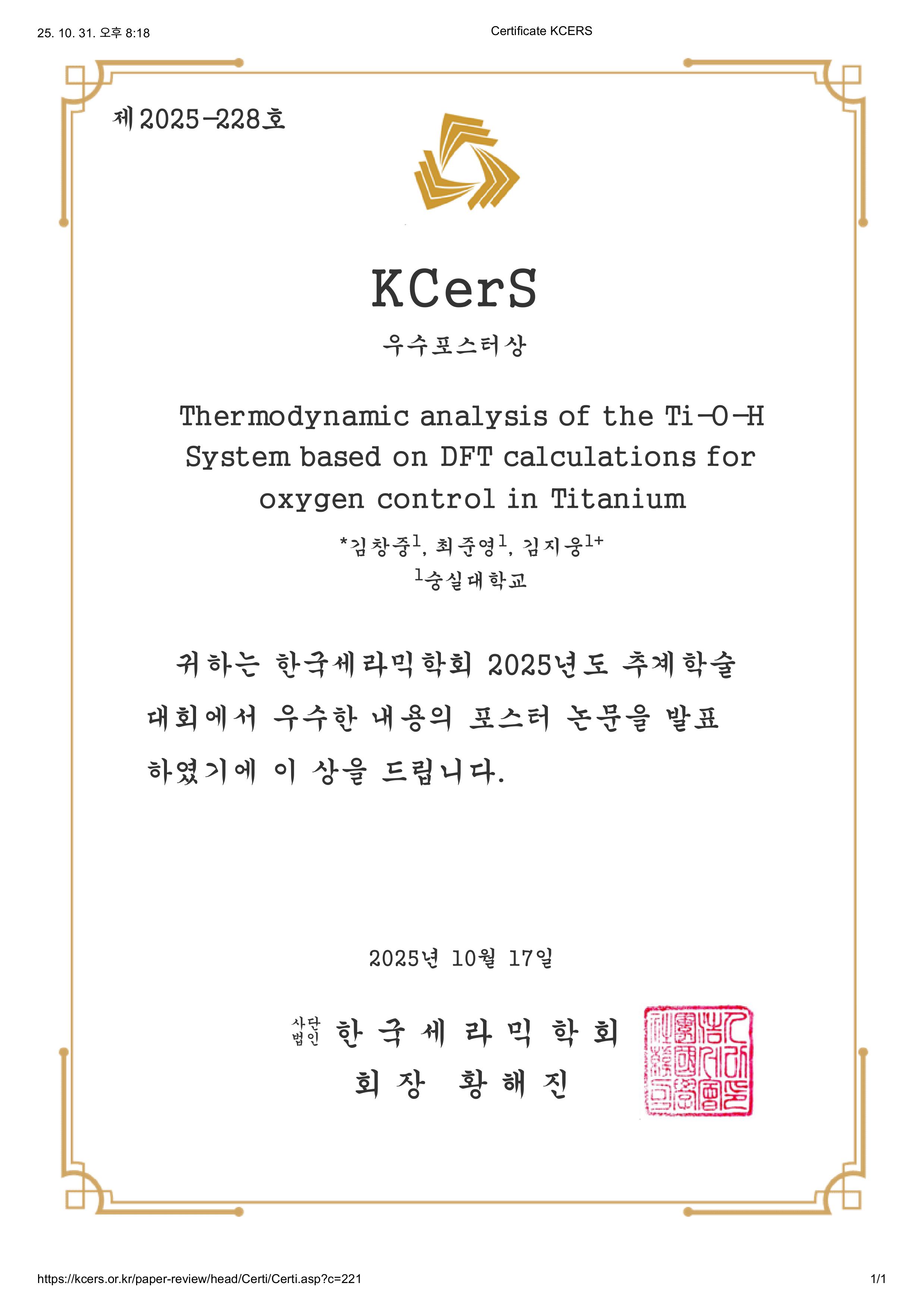

-
 [수상소식] 2025년도 한국세라믹학회 추계학술대회 KCerS 우수포스터상 수상
[수상소식] 2025년도 한국세라믹학회 추계학술대회 KCerS 우수포스터상 수상2025년도 한국세라믹학회 추계학술대회 KCerS 우수포스터상을 김창중 석사과정이 수상하였습니다. 축하드립니다.
-
 [논문게재] High-temperature stability in Ti-based MAX phases: vacancy effects on mechanical prop…
[논문게재] High-temperature stability in Ti-based MAX phases: vacancy effects on mechanical prop…Author: H.Kim†, H.Son†, Y.Jeong, J.Kim*Title: High-temperature stability in Ti-based MAX phases: vacancy effects on mechanical properties Journal: Journal of Korean Ceramic SocietyYear: 2025Impact factor: 3.8Abstract:Tin+1AlCn MAX phases are of interest due to their high-temperature mechanical properties. In this study, we investigated their structural and mechanical properties up to 2000 K using molecular dynamics (MD) tensile simulations and density functional theory (DFT) calculations, focusing on the effect of vacancies. The presence of up to 12.5% Al vacancies reduced the vertical Young’s modulus by only 12.59% and left the UTS almost unchanged, demonstrating considerable mechanical robustness. In contrast, the same concentration of Ti vacancies degraded the Young’s modulus by 40.7% at 2000 K. Electron localization function (ELF) analysis confirmed that the mechanical properties are dominated by strong Ti–C covalent bonds, which are not weakened by Al vacancies. In comparison to B1-type TiC, whose Young’s modulus decreases by ~ 32% at 2000 K, Tin+1AlCn retains over 88% of its room-temperature vertical Young’s modulus. This work provides a theoretical basis for considering Tin+1AlCn MAX phases as potential high-temperature structural materials.
-
 [취업소식] 이진용 석사 LG에너지솔루션 합격
[취업소식] 이진용 석사 LG에너지솔루션 합격연구실에서 석사과정을 마친 이진용 석사가 LG에너지솔루션 CPO 직무에 합격하였습니다. 축하드립니다.
-
 2025년 12월 11일 CMD 환송회
2025년 12월 11일 CMD 환송회경수아, 이하은(남), 최준영 세 분과 CMD 인원 전원이 함께 환송회를 가졌습니다. 축하드립니다~~!
-
 2025년 11월 24일 석사 이하은 취업 기념 단체 식사
2025년 11월 24일 석사 이하은 취업 기념 단체 식사연구실에서 석사과정을 마친 이하은 학생과 다같이 식사하는 좋은 시간을 가졌습니다.맛있는 식사 대접해주신 하은 선배님 감사드립니다! 그리고 MSWoven에서의 새로운 출발도 축하드리며 언제나 응원하겠습니다!
-
 2025년 11월 19일 ~ 11월 21일 KJ-ceramics 학회 참석
2025년 11월 19일 ~ 11월 21일 KJ-ceramics 학회 참석제주 오리엔탈 호텔에서 열린 The 39th International Korea-Japan Seminar on Ceramics에 김효경, 경수아, 김창중, 이권열 학생이 참석하여 구두 발표 및 포스터 발표를 진행하였습니다.












